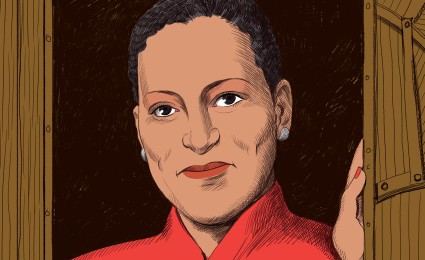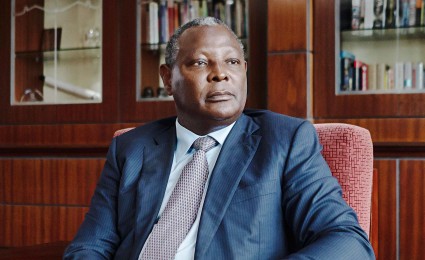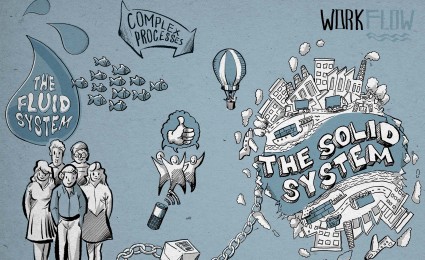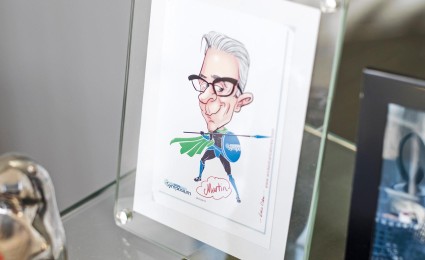Creativity is a human pursuit. Or is it? You might think that only musical geniuses can write the perfect pop song, but the algorithms are catching up fast.
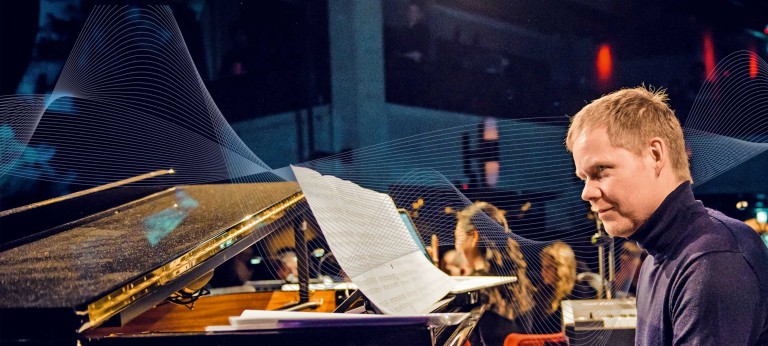

Think:Act Magazine "Digital Darwinism"
Digital is renewing music, not destroying it

Think:Act Magazine
Deutsche Grammophon is working to bring the world’s oldest record label into the streaming era
Deutsche Grammophon, the leading brand for recorded classical music, is trying to adapt to new listening habits, new formats and a new age of consumers. How will it cope with the changes that lie ahead?
With 74 minutes of recording capacity, the modern CD was reputedly designed to be able to rival vinyl records and deliver Beethoven's Ninth Symphony without having to change discs. When renowned conductor Herbert von Karajan's baton came down well within that time limit in Deutsche Grammophon's 1982 recording, it more than met the challenge. The digital impact on music had just begun.
For Deutsche Grammophon (DG), new technology has always been a prime motivator. In fact, Emile Berliner, who started DG in 1898, invented the gramophone and the shellac record, and then satisfied the demands of his new invention by moving into the recording business. The pleasure of listening to music might not have changed, but the business of creating and delivering it has. Today, digital – in all its forms – has transformed the music world.

DG might be the world's oldest existing record label and an important reference for classical music, but the new digital landscape means it is now facing huge threats. Can DG continue as a premium brand while transforming itself to fit into the digital world?
There is a data advantage with streaming.
Its strategy is varied in addressing its threats. Firstly, it's trying to hold on to its base – loyal and older customers who still buy CDs. CD sales are declining, but old CD recordings could also provide a bridge to new digital streaming. Secondly, as its core audience grows older, who will replace it? What kind of classical music does this new audience want and how will they consume it? Thirdly, is there another way to attract both old and new into the classical world through technology? The answer to that could lie in digital education services.
These strategic questions arise as a response to the diverse problems facing DG: A slump in record sales paired with the oversupply in artists and recordings, a growing fatigue with new interpretations of the masterpieces, self-starters setting up recording studios in their basements and full concert recordings available for free online. Add the disruption in formats – CD, MP3s, streaming and now a nostalgic but undeniable revival of the vinyl record album – and packaging music is a completely different business now.
You can't fault DG for setting out a broad response. "It would be wrong to assume that anything in the value chain – except the music-making itself, which will always be organic – remains exempt from the forces of digitalization," said DG CEO Clemens Trautmann in a recent interview. "And it is my philosophy to rather actively shape this development than be a late follower." That statement reflects a pattern over the past few years of DG being quick to recognize the need to face the challenges head-on.
Attempts to keep ahead of the curve have been accompanied by a few false turns. Trautmann's predecessor Mark Wilkinson merged the company's digital and non-digital departments, diversifying their portfolio with crossover artists and new genre collaborations. It was an attempt to build a new audience, but it brought criticism. "Many loyal fans ... are starting to see courageous crossover projects as signs of lacking respect towards the yellow brand," claims Hartmut Welscher of the digital classical music magazine VAN, referring to DG's iconic yellow label. "It is an open secret that the most successful recordings are still those of the Karajan generation. The label is still feeding off of them," he adds.
Whether embracing digital change will pay off financially is yet to be proven. Right now, DG's management is hesitant to talk openly about digital innovation and its success, but its progress shows a degree of experimentation, in what seems like a dual approach of keeping focused on the present – with CD sales still being important – while also embracing new modes of listening and distribution to make it future ready. For example, DG was the first classical record label with its own streaming app, DG Discovery, which it set up relatively early in 2014. That was followed with exclusive content for Apple Music in 2018. "Deutsche Grammophon really showed lots of creativity in the past few years to play to the tune of the new age of listening to music," says classical expert Teresa Pieschacón Raphael.
There is a data advantage with streaming: It can provide a greater insight into listening habits than CDs can. Companies can now see how frequently a song is listened to and by whom. Trautmann has not cited the data advantages, but in an interview with BR Klassik he highlighted the commercial positives of the streaming market: "If you compare selling new releases via CDs or streaming, the sale of the ... CD is far more lucrative in the first year. But [with streaming] the earnings cumulate with every stream over the years and decades."
This all points to an underlying strategy to prioritize streaming without losing its current audience, while potentially developing a new one. Research shows that more and more younger listeners are seeking out classical music – albeit a kind that might horrify older aficionados: 2018's most popular search term was "relaxing piano music."
Leaving aside the benefits of focusing on a new audience, Pieschacón Raphael sees an alternative digital move from DG that could appeal both to its base and its new audience: "DG has understood that their audience is conservative and appreciates orientation but is not in denial of technological developments and advantages of new services. So they set their sight on educational services that only through modern means have become possible." One prominent example is the label's interactive masterclasses: Famous artists teach students all over the world how to improve their playing via livestream.
It is also stimulating new purchases by feeding off anniversaries: There was the CD box set release of Bach333 and a homage to Leonard Bernstein for his 100th birthday. It also made use of its own, if rather arbitrary, 120th birthday last year. Founded in Hannover, Germany, DG celebrated at the site of Beijing's Imperial Ancestral Temple. "We use this anniversary to demonstrate our strong ties with the Asian audience, where our brand is valued and regarded as the single reference for classical music and where the appreciation for classical music in general is much higher," Trautmann said. The sound of a new beginning, perhaps, or simply staying in tune with the times.

How evolution drives success in the digital era
![{[downloads[language].preview]}](https://www.rolandberger.com/publications/publication_image/Think_Act_Magazine_Darwinism_Cover_EN_download_preview.jpg)
Change. Survive. Thrive. What your company needs to know to prosper in the digital age.
Curious about the contents of our newest Think:Act magazine? Receive your very own copy by signing up now! Subscribe here to receive our Think:Act magazine and the latest news from Roland Berger.









